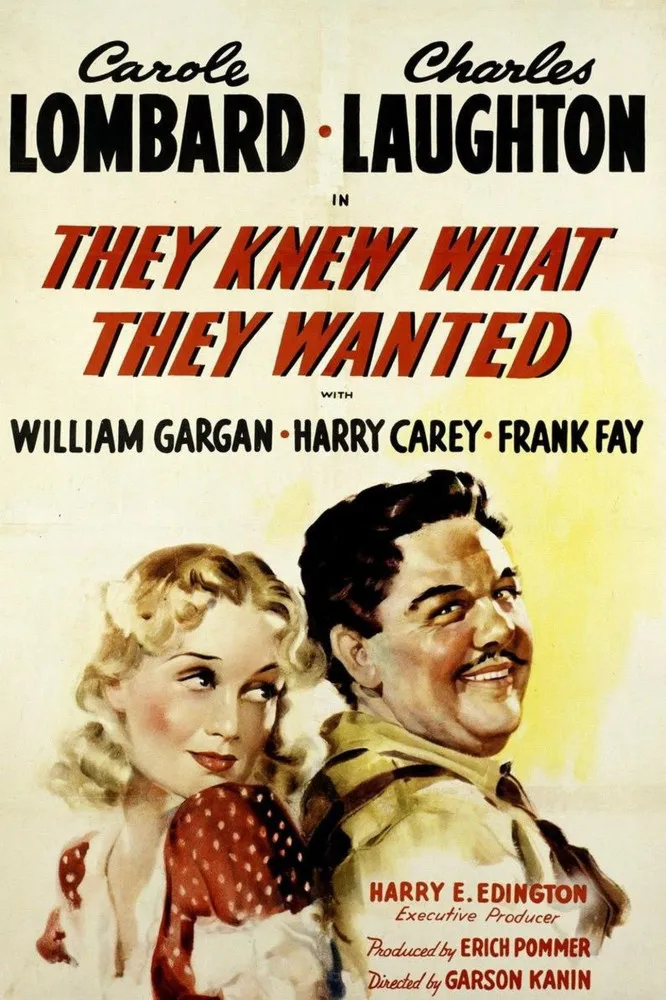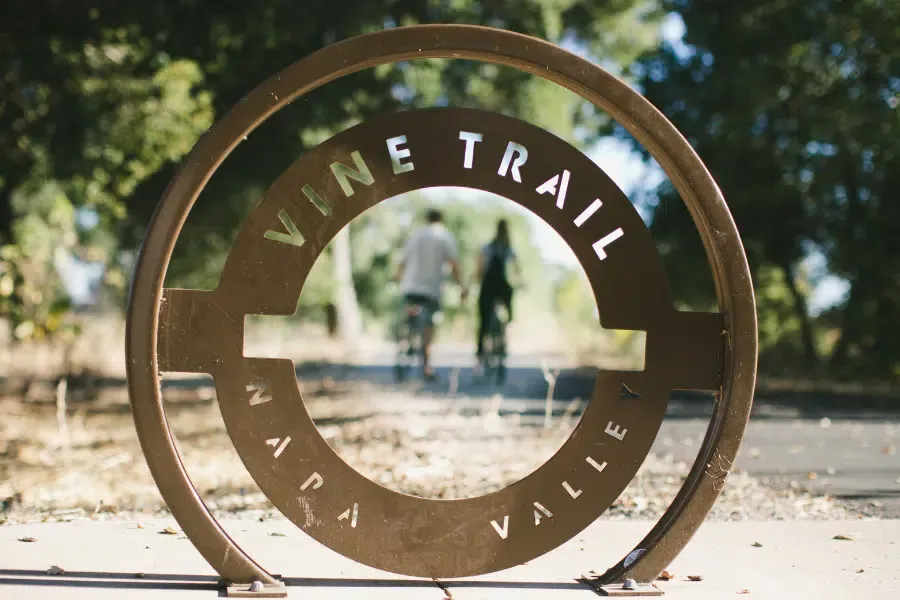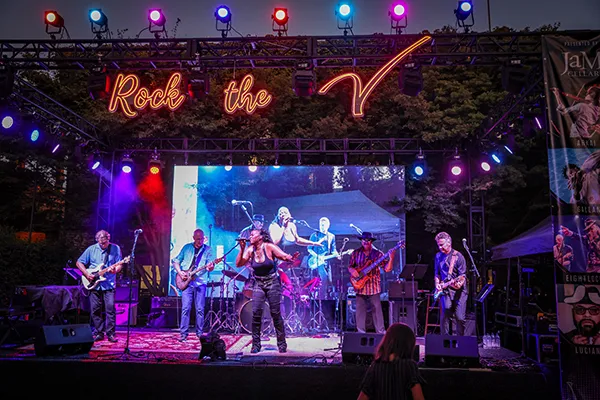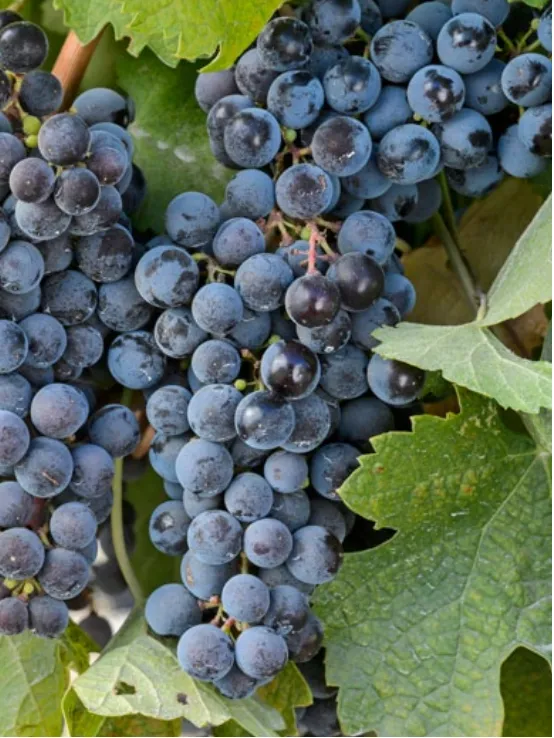From 1940, a local paper reports on the production of They Knew What They Wanted. Movieland’s long love affair with Napa
The cinematic love affair between Hollywood and Napa Valley has spanned more than eight decades in two centuries. Since the mid-1900s, this relationship has unfolded and blossomed against the backdrop of both familiar and unfamiliar local settings. These creative collaborations whether for the big or little screen, fact or fiction, romance, comedy or drama, have had their respective stories portrayed by some of Hollywood’s most iconic celebrities. The list is long, so the following is just a sampler of Napa Valley’s screen credits.
The first spark in this longtime affair began in the summer of 1940 when RKO Pictures arrived with their cast and crew for the feature film They Knew What They Wanted. It starred two of Hollywood’s biggest names, Carol Lombard and Charles Laughton.
Shortly after their arrival, a special ceremony was held on the steps of the Napa County Courthouse where Lombard and Laughton received the keys to Napa. According to the local press, the courthouse square and surrounding streets were thronged with starstruck locals. The presence of the famed spouses of the movie’s leading actors added to the ardor of the local fans: Lombard’s husband was Clark Gable and Laughton’s wife was Elsa Lanchester. These celebrity couples rarely had any privacy while in Napa Valley.
The movie’s plot was a familiar one: An older, socially hesitant but financially comfortable man (Laughton) falls for a beautiful young woman (Lombard). However, recognizing his shortcomings, the older man enlists the help of a younger, more worldly man to help him win the woman’s heart and hand. (The other man was portrayed by William Gargan. He won an Oscar for this role.) Then it gets complicated.
Directed by Garson Kanin, the film’s primary location was the Oakville area. The Fagiani Winery, now PlumpJack, was the setting for the older man’s ranch and other Napa Valley locations played an important role in the production. The Uptown Theatre in Napa served as the place for the crew to view the dailies, the footage filmed each day. It was also the venue for the local, invitation-only premiere of the movie.

After the departure of Lombard, Laughton and company, and with America’s entrance into World War II, the relationship between Hollywood and Napa Valley languished. But in the 1950s the heat was turned up and things got steamy again with the sordid tale of The Unholy Wife. Originally titled The Lady and the Prowler, this RKO Pictures production was released in 1957. It starred Diana Dors (the UK’s answer to Marilyn Monroe), Rod Steiger, Tom Tryon, Ethel Barrymore and Beulah Bondi.
Directed by John Farrow (Mia’s father), the $2 million budget Technicolor movie was filmed throughout Napa County, with Beringer Winery serving as the primary location for this noir crime film. The classic plot featured a young, beautiful gold-digger (Dors) tiring of her rich, older and lackluster husband (Steiger). She lures a young man (Tryon) to be her “playmate” and together they plot the murder of the husband. As usual, it doesn’t end well.
A year later, circa 1958, local film fans once again became starstruck with the arrival of the cast and crew of Universal-International Pictures’ This Earth Is Mine. Rock Hudson portrayed the rebel of a Prohibition-era winemaking family dynasty in fictional Rambeau Valley. Hudson’s on-camera love interest was played by Jean Simmons in this innuendo-filled and suggestively steamy movie for mid-century America.
The film also starred Dorothy McGuire, Claude Rains and Kent Smith, and introduced Cindy Robbins. Director Henry King put out a casting call for 200 local extras. One of those local extras was a musician, the late Jack Borthwick. He commented on how long the wait was between scenes. Two other Napa County residents were chosen for the dream jobs of stand-ins. Joyce Wheatley and Dick Merryfield stood in for Simmons and Hudson, respectively. Both Wheatley and Merryfield commented on their surprise in finding the actors to be down-to-earth, genuine and very nice.
In addition to local extras, the movie featured the Niebaum Estate residence, Inglenook and Krug vineyards and wineries and the Yountville train depot as the primary Napa Valley locations.
Following This Earth Is Mine was the family-friendly Walt Disney Productions Pollyanna, currently the subject of an exhibition at the Napa Valley Museum Yountville.
Then, on the heels of this sweet Disney film arrived America’s heart-throb, Elvis Presley. “The King” starred in Wild in the Country, the 1960 Jerry Wald Production for Twentieth Century-Fox. This Elvis vehicle was not like his usual movie formula with lots of girls and ample opportunity for Presley to sing and dance. Wild in the Country was a drama about a troubled young man who, with the help of an older woman portrayed by Hope Lange, discovers a hidden and promising talent for writing. But, of course, it is a rocky and turbulent road.
In addition to Presley and Lange, the cast included Tuesday Weld, Minnie Perkins, John Ireland and Gary Lockwood. The primary Napa Valley locations were the Ink House along Whitehall Lane south of St. Helena and Casa Nuestra Winery.
During the filming, superstar Presley was constantly followed and hounded by his fans. For the safety of all concerned, his accommodations were changed almost daily and he was assigned a detail of local police.
In the 1970s, Hollywood produced films revolving around the hot-button social and political issue of Vietnam. In 1970, Oscar-winning actor Arthur Kennedy portrayed a Vietnam veteran returning home in My Old Man’s Place. This raw and emotionally charged story unfolded along St. Helena’s Main Street as well as in Pope and Berryessa valleys.
A second Vietnam storyline feature film with connections to the Napa Valley was Francis Ford Coppola’s blockbuster Apocalypse Now. Starring a long list of big names of that era, including Marlon Brando and Martin Sheen, it was loosely based on Joseph Conrad’s novel Heart of Darkness. Although it was primarily shot in the Philippines, this Oscar-winning film also featured the Napa River as a stand-in for Vietnam’s Mekong Delta.
As the 20th century was drawing to a close, two well-known actors of the ‘90s starred in films at least partially filmed in Napa Valley. In 1994, Keanu Reeves, Anthony Quinn, Aitana Sanchez-Gijon and Angelica Aragon starred in the post-World War II period film A Walk in the Clouds. It was filmed in both Sonoma and Napa counties, with the Mt. Veeder area of Napa County providing vineyards that easily evoked the mid-1940s.
The second movie was Jack. In 1995, Francis Ford Coppola teamed up with part-time Napa County resident and superstar Robin Williams to film this bittersweet tale. The story about a young boy, Williams’ character, afflicted with a rare disorder causing him to rapidly grow and age to about 40 years old, unfolded at St. Helena Elementary school and in the neighboring community.
With the arrival of the 21st century came more films and documentaries. In 2001, was the movie Bandits. Billed as a “must see comedy,” it starred Bruce Willis, Cate Blanchett and Billy Bob Thorton—as well as downtown Napa.
Reality was the focus of two other movies, Zodiac (2005) about the search for the Zodiac Killer and Bottleshock (2008) about the “Judgment of Paris” wine tasting of 1976 that put Napa Valley on the map. Another wine-related film was a documentary about Napa Valley, its wine industry and lifestyle titled Napa Valley Dreams (2013). In 2019, came Wine Country, a direct-to-Netflix production featuring a group of friends on a wine-soaked girls trip to the Napa Valley.
Before these two productions referencing the valley’s wine focus, however, a couple films brought a bit of horror and humor to the area. In 2011, Coppola wrote and directed Twixt. This horror/thriller genre movie was filmed at Coppola’s estate and in Lake County using a unique combination of 2-D and 3-D technology.
Walt Disney returned to Napa Valley to film Bedtime Stories (2008). The Calistoga area provided some of the locations, including Castello di Amorosa, for this family-friendly movie about how the stories told by two children come true and change the lives of the two leading actors’ characters. It starred Keri Russell and Adam Sandler.
This overview of locally filmed movies and documentaries is a substantial sampler of Napa Valley’s cinematic history, though it is far from comprehensive. And keep your eyes open; there will likely be more to come in the future as the valley’s beauty and charm continue to attract filmmakers.
Rebecca Yerger, a Napa Valley historian and author, can be contacted at yergerenterprises@yahoo.com.









